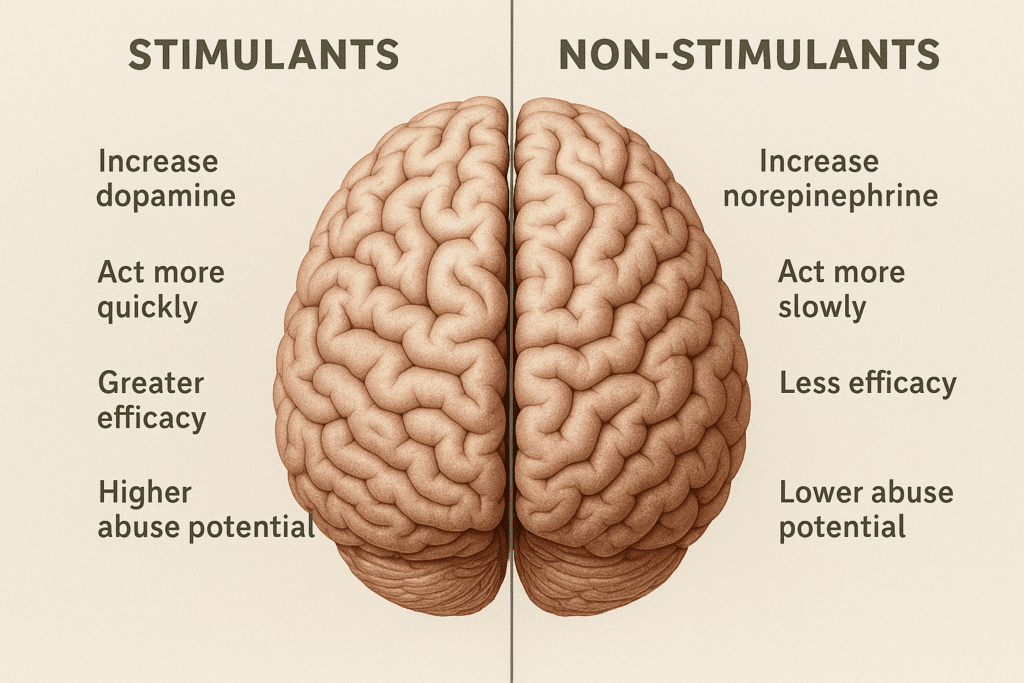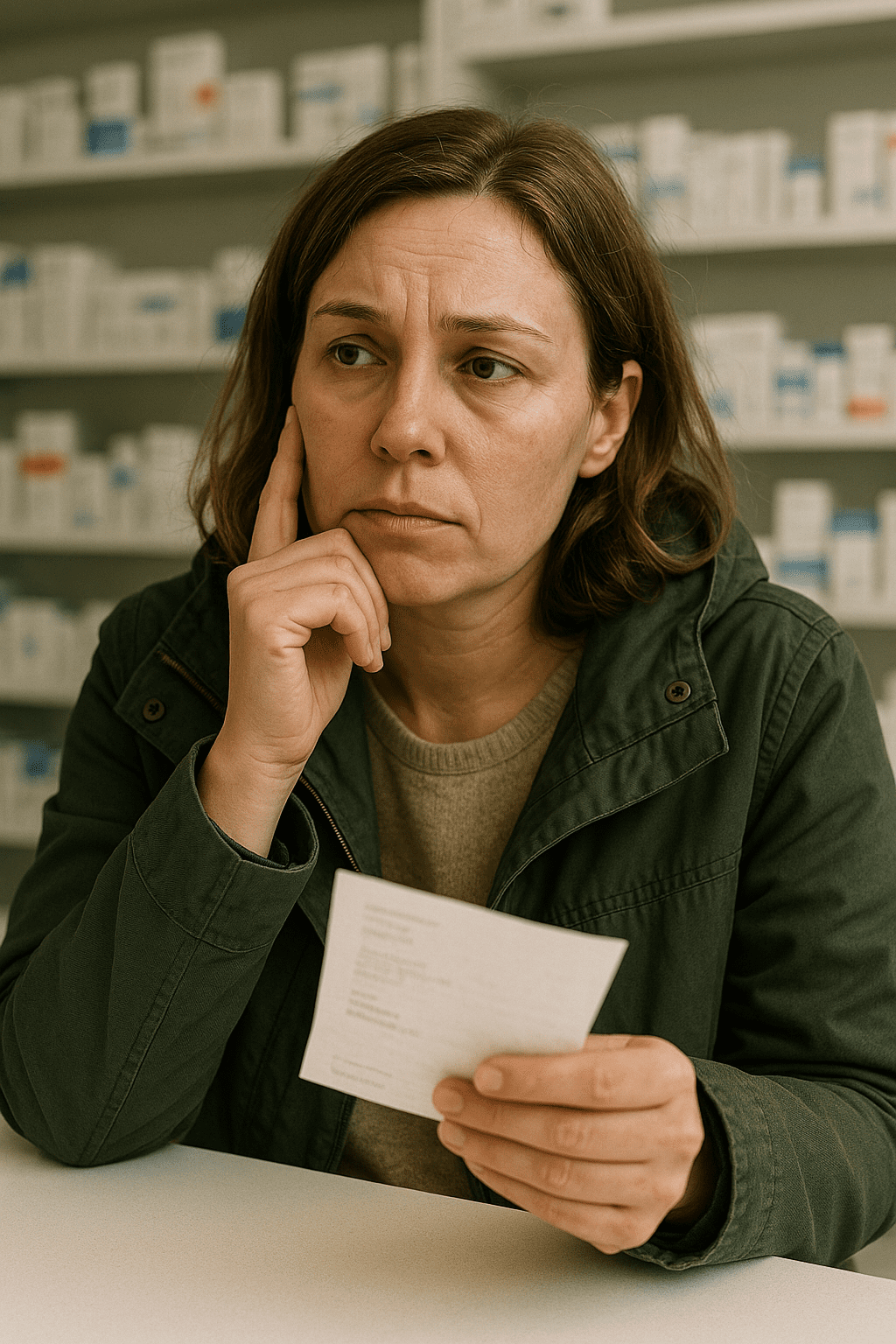A guide for parents in the grey zone
When my friend’s kid got diagnosed with ADHD, she rang me in a panic.
“They say meds help, but what if I turn him into a zombie?” she said.
“Also, what if I don’t medicate, and he can’t focus at all?”
She’s not alone. Loads of us grew up undiagnosed, only to find ourselves parenting kids with the same squiggly wiring.
Now we’re the adults expected to make “evidence-based decisions.” Ironic, really.
Especially when the evidence is confusing, and your gut is full of dread.
So… No guilt, no judgement. Just the truth, with a healthy side of nuance.
ADHD symptoms that are real, but manageable (for now)
If your kid’s been diagnosed but isn’t throwing chairs across the classroom, you’re probably sitting in the grey zone.
You know the one.
Where the symptoms are obvious enough to disrupt things, but not enough to scream emergency.
Here’s what “mild” ADHD might look like:
- They interrupt constantly, even when they’re not trying to be rude.
- They “forget” homework that you both definitely packed.
- Their room looks like a toddler and a tornado had a playdate.
- Emotional outbursts over tiny things (a broken crayon = the end of civilisation).
- Wild, bouncing energy… until they hit a wall and collapse.
These behaviours are often chalked up to “just being a kid.”
But if they happen every day, cause distress, and don’t improve with routine tweaks?
That’s your cue, it’s not just personality, it’s neurology.
Will ADHD get worse if we don’t medicate?
Short answer: not always.
Longer answer: it depends on the kid, the context, and what kind of support they’re getting.
ADHD doesn’t necessarily worsen over time, but the challenges can pile up.
As schoolwork gets harder, unstructured play drops, and expectations skyrocket—kids can struggle more.
The brain isn’t finished developing till their mid-20s.
So what looks “manageable” at age seven might feel unbearable by age twelve.
Especially if they’re constantly hearing that they’re lazy, naughty, or not trying hard enough.
How puberty changes the game for ADHD kids
Hormones. Social pressure. Exams. The unholy trifecta.
Puberty is often when ADHD symptoms spike, even in kids who’ve been coasting along.
Why? Because puberty affects dopamine levels and emotional regulation.

So if your kid was fidgety before, they might now be loud, moody, and emotionally unpredictable.
Girls and AFAB kids are especially good at masking, but this is often the age their coping strategies unravel.
(AFAB means “assigned female at birth”, including those who may not identify as girls but were raised with similar gendered expectations.)
Many kids who didn’t “need” medication before puberty may start needing support then.
It’s not regression. It’s just their brain hitting a new phase of demand.
Will they need medication forever?
Not necessarily.
Some kids do best with long-term medication. Others grow out of the need.
And some take breaks during holidays or re-evaluate every few years.
The goal of ADHD medication isn’t to sedate or fix.
It’s to support.
If a child can function well without meds, great.
If meds help them stay regulated, that’s also great.
Think of it like glasses.
You wouldn’t make a kid “earn” their right to wear them.
But you’d also reassess the prescription as their eyes change.
Can brain training help them come off meds?
There’s a lot of hype around brain training, but here’s the truth: it’s not a miracle.
Some types – like working memory training or neurofeedback, can help with focus and flexibility.
But results are mixed, and effects are often small.
That said, some kids do benefit from building executive function skills in structured ways.
Therapies like CBT, occupational therapy, or even ADHD coaching for kids can build confidence and routines.
It’s not about “curing” ADHD.
It’s about strengthening the scaffolding so they might lean on meds less, or not at all.
Stimulants vs non-stimulants: what’s the difference?
Stimulants (like Ritalin or Adderall) are the most commonly prescribed.

They work fast – often within 30 minutes,and wear off by bedtime.
They boost dopamine and norepinephrine, helping with focus and impulse control.
Non-stimulants (like Strattera or Guanfacine) work differently.
They build up gradually, affect the prefrontal cortex, and can be better for kids with anxiety or sleep issues.
They’re also used when stimulants cause too many side effects or don’t work well.
Neither type is better. It’s about what works for your child.
Sometimes that takes trial, error, and a few rounds of frustrated note-taking.
Are these meds easy to get?
In most countries, ADHD meds are controlled substances.
That means tight regulations, regular doctor visits, and often long waitlists.
In the UK and Greece, for example, stimulant prescriptions need careful monitoring and can’t be easily refilled.
Some families face months of bureaucracy just to get a diagnosis, let alone medication.
Private routes are faster, but not always affordable.
So no, it’s not “easy” to medicate your child.
It’s a system. And systems are rarely built with neurodivergent families in mind.
What helped you make your decision about medication—and what do you wish someone had told you sooner?




